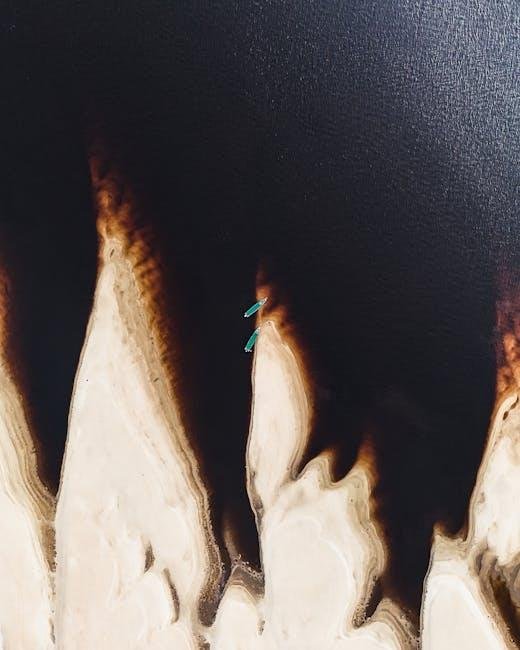Embarking on the adventure of kayaking is akin to setting sail on a journey of self-finding, where every paddle stroke carves a new path through uncharted waters. For new kayakers, the early days may feel overwhelming, filled with both exhilarating successes and the occasional splash of uncertainty. As you dip your oars into this vibrant world of tranquil lakes and rushing rivers, knowing how to track your progress can illuminate your growth and give clarity to your experience on the water. In this article, we’ll explore practical strategies and tools that will not only help you monitor your advancement as a kayaker but also enhance your overall enjoyment of the sport.From noting your skills and stamina to celebrating your milestones, let’s navigate the waters of progress together and turn your kayaking journey into a rewarding adventure.
Setting Clear goals to Measure Your Kayaking Journey
To enhance your kayaking experience, itS crucial to establish specific, measurable, achievable, relevant, and time-bound (SMART) goals. by doing this, you ensure that your efforts are directed towards concrete outcomes rather than abstract aspirations. For instance, you might aim to improve your distance paddled within a month or successfully execute a certain technique by the end of the season. Here are some examples of effective goals to consider:
- Paddle for at least 10 miles within your first month.
- Conquer five new kayaking routes within the next two months.
- Master the forward stroke technique by attending a workshop.
Utilizing a tracking system for your kayaking progress can also provide valuable insights into your development. Consider maintaining a simple table to log your sessions,highlighting essential metrics such as distance,time,and any skills practiced. this practice not only keeps you accountable but also helps visualize your progress. Here’s a suggestion for how to structure your tracking table:
| Date | Distance (miles) | Time (hours) | Skills Practiced |
|---|---|---|---|
| September 1 | 5 | 1.5 | Forward Stroke |
| September 8 | 7 | 2 | Turning Techniques |
| September 15 | 10 | 3 | Rescue Techniques |

Essential Tools and Techniques for Tracking Progress
Tracking your progress as a new kayaker is essential for maintaining motivation and improving your skills. One effective method is to maintain a kayaking logbook, where you can record details of each outing. Consider including elements such as the date, duration, distance covered, and any specific techniques you practiced. Additionally, note down your feelings or challenges faced during each session. This personal diary will not only help you see your growth over time but will also highlight areas that need more focus.
Incorporating technology can further enhance your tracking experience.Numerous apps and devices are tailored for outdoor activities, allowing you to monitor your performance in real-time. Below is a brief comparison of popular tools:
| Tool/App | Features | Accessibility |
|---|---|---|
| Strava | GPS tracking, performance analysis, social sharing | mobile & Web |
| MapMyRun | Route mapping, distance tracking, coaching plans | Mobile & Web |
| Garmin GPS | Advanced navigation, heart rate monitoring, weather updates | Device |
Whichever method you choose, consistency is key. Regularly reviewing your logs or app data will offer insights into your progress and help set goals for your future kayaking adventures.

building a Routine: documenting Your Kayaking Adventures
Creating a routine to document your kayaking adventures can significantly enhance your experience on the water. By keeping track of your outings, you’ll not only celebrate your progress but also gain insights into areas that require betterment. Start by maintaining a journal or digital log where you can jot down details from each trip, including:
- Date and time of your outing
- Location of your kayaking adventure
- Weather conditions during your trip
- Duration of the paddle
- Personal reflections and feelings during the experience
As you accumulate entries in your log, consider creating a simple table to visualize your progress over time. this can serve as a swift reference to see how you’ve changed and improved with each experience. Here’s an example of what your table might look like:
| Trip Date | Location | Duration (hours) | Notes |
|---|---|---|---|
| 2023-07-10 | lake Serenity | 2 | Felt stronger on the water. |
| 2023-08-15 | River Rapids | 3 | Struggled with the current, need practice. |
| 2023-09-05 | Coastal Cove | 1.5 | Saw dolphins! Great experience. |
By consistently logging your adventures, you create a narrative of your growth and skills as a kayaker, motivating you to set new goals and embrace challenges ahead. The routine of documenting will not only help you stay organized but can also serve as a source of inspiration as you look back on your journey.

Reflecting on Growth: Analyzing Your Skills and Experiences
Taking the time to analyze your skills and experiences as a new kayaker can lead to critically important growth in your paddling journey. This process can start by maintaining a journal in which you document your practices, challenges, and achievements. You can create sections to reflect on various aspects, such as your technique, stamina, and confidence in different water conditions. Reviewing these reflections allows you to identify patterns in your progression and the areas that require more attention. Here are some elements you might consider noting:
- Technique improvements: Describe any new strokes you’ve mastered.
- Stamina levels: Track how long you can paddle without fatigue.
- Confidence in conditions: Rate your comfort level in different weather and water types.
Additionally, visual aids can definitely help you better understand your development. Creating a simple table can keep track of your kayaking outings, including elements such as distance covered, duration, and any new skills attempted. This structured approach not only makes it easier to notice trends over time but also fosters motivation as you visualize your progress.
| Date | Distance (miles) | Duration (hours) | Skills Tried |
|---|---|---|---|
| 03/01/2023 | 5 | 2 | Forward Stroke, Edging |
| 03/15/2023 | 7 | 2.5 | roll, Sweep stroke |
| 04/01/2023 | 10 | 3 | bracing, Ferrying |
Final Thoughts
As you embark on your journey as a new kayaker, tracking your progress is not just about logging miles or perfecting strokes; it’s about celebrating the small victories along the way. Remember that every moment spent on the water offers a unique possibility for growth, reflection, and connection with nature.Whether you’re capturing your achievements in a journal,sharing your experiences with others,or simply taking a moment to appreciate how far you’ve come,these practices can enhance your adventure and deepen your love for the sport. So grab your paddle, cherish each experience, and let every outing inspire you to set new goals. The water is yours to explore, and with each stroke, your not just tracking progress—you’re crafting an unforgettable journey. Safe paddling!
